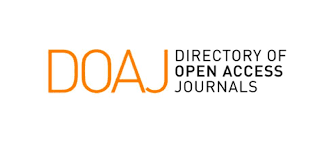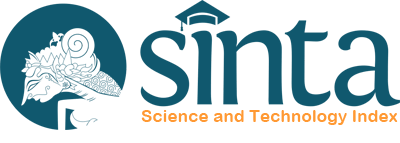Tsunami Disaster Mitigation Study by Determining Run Up and The Banyuwangi Area Tsunami Arrival Time
Abstract
Tsunami disaster mitigation studies have been conducted in Banyuwangi Regency by conducting research on the analysis of run-ups and tsunami arrival times for the Banyuwangi area. The research was conducted at the Meteorology, Climatology and Geophysics Agency region 3 Denpasar using the software Tsunami Observation and Simulation Terminal (TOAST). The data used in this study is secondary data in the form of magnitude and data on the depth of underwater earthquakes, with magnitudes of 7.0 to magnitude 8.5 that have the potential to cause tsunamis and earthquake depth data of 18 km to 65 km. From the results of data processing with the TOAST application obtained the results of run-up and tsunami arrival time. Maximum run-up data was obtained by 9,718 m while the fastest tsunami arrival time data to the coast is 4 minutes after the tsunami. Maximum run-up data is then used for mitigation and the fastest tsunami arrival time then can be made a mitigation scenario for tsunami disaster.
Downloads
References
[2] P. Supendi, Analisis Aktifitas Seismik di Jawa Barat dan sekitarnya, Skripsi, Jurusan Geofisika, Akademi Meteorologi dan Geofisika, Jakarta.
[3] A. Hijriani, Peningkatan Akurasi Lokasi Gempa Mikro Dengan Menggunakan Metoda Double-Difference Dan Korelasi Silang Master Waveform, Jurnal Geofisika, Vol. 15, No. 3, 2017, pp: 21-25.
[4] H. M. F. Haykal, Nasrurroh A, Estimasi Durasi Pecah dan Nilai Mwp untuk Mengidentifikasi Gempa Bumi Pembangkit Tsunami di Sulawesi Utara, Jurnal Geofisik, Vol. 17, No. 1, 2019, pp: 10-15.
[5] Priadi, Ramadhan Et Al. Analisis Karakteristik Tsunami Donggala-Palu Berdasarkan Durasi Ruptur (Tdur) dan Orientasi Sesar Aktif Menggunakan Metode HC-plot. Jurnal Geofisika, [S.l.], v. 17, No.1, 2019, pp:16-20.
[6] U. A. Riadi, N. Andri D, and S. Hasbi Ash, Hypocenter relocations and tsunami simulation for the 15 November 2014 Northern Molucca Sea earthquake in Indonesia, Jurnal Geofisika, Vol. 15, No. 3, 2017, pp: 1-9.
[7] BMKG, peta sumber dan bahaya gempa Indonesia tahun 2017, Buku Katalog histori gempa bumi BMKG, 2017.
[8] Pertiwi, Imanuela I, Fattah, and M. H. Rauf, Estimation Of Tsunami Inundation And Disaster Mitigation In Bulukumba Indonesia, Jurnal Geofisika, Vol 16. No.1, 2018, pp: 1-8.
[9] A.Saptaji, Pengukuran Tsunami, Laporan Penelitian, 2012.
[10] Nurhidayani, Mitigation Scheme for Banggae Future Tsunami, Jurnal, Universitas Hasanuddin, 2015.










